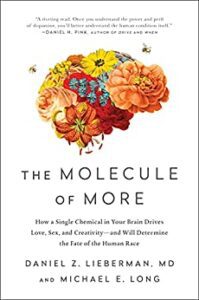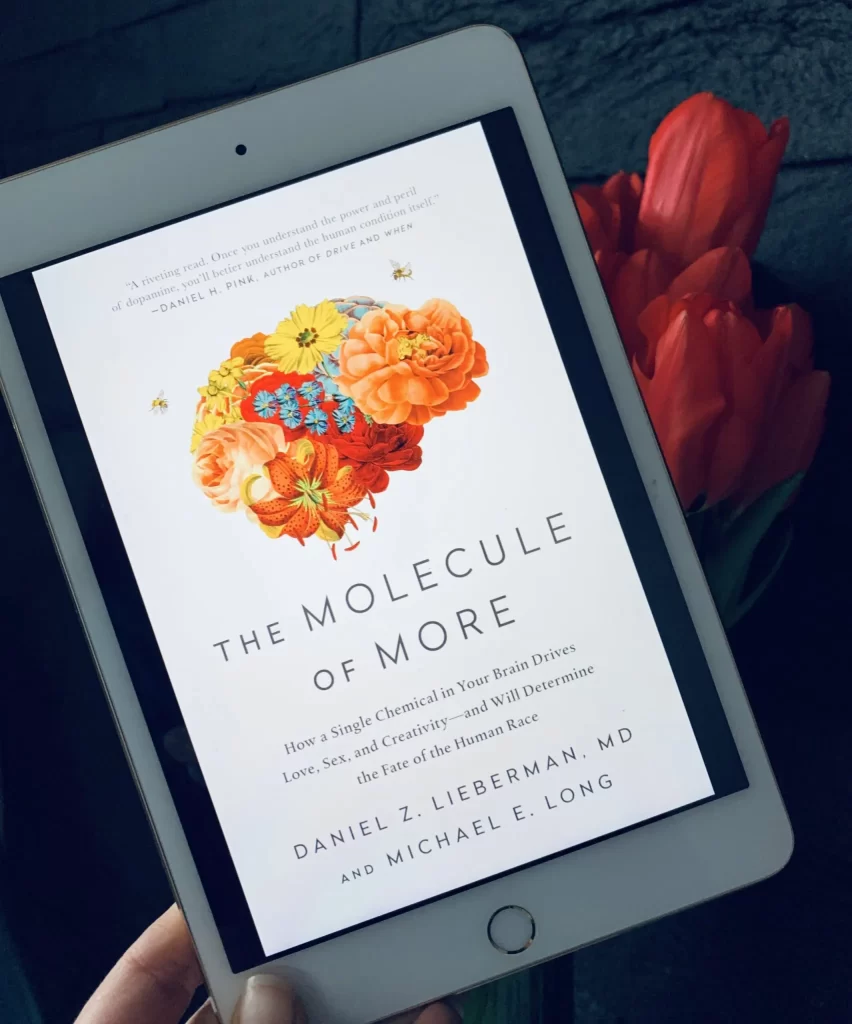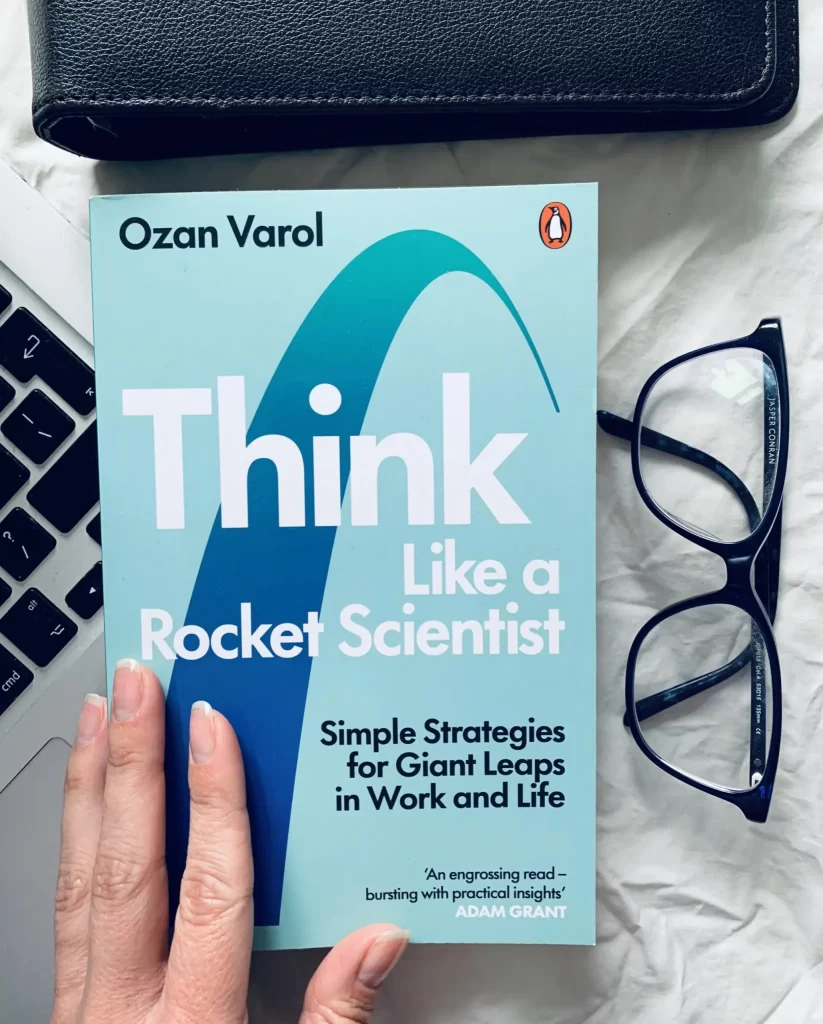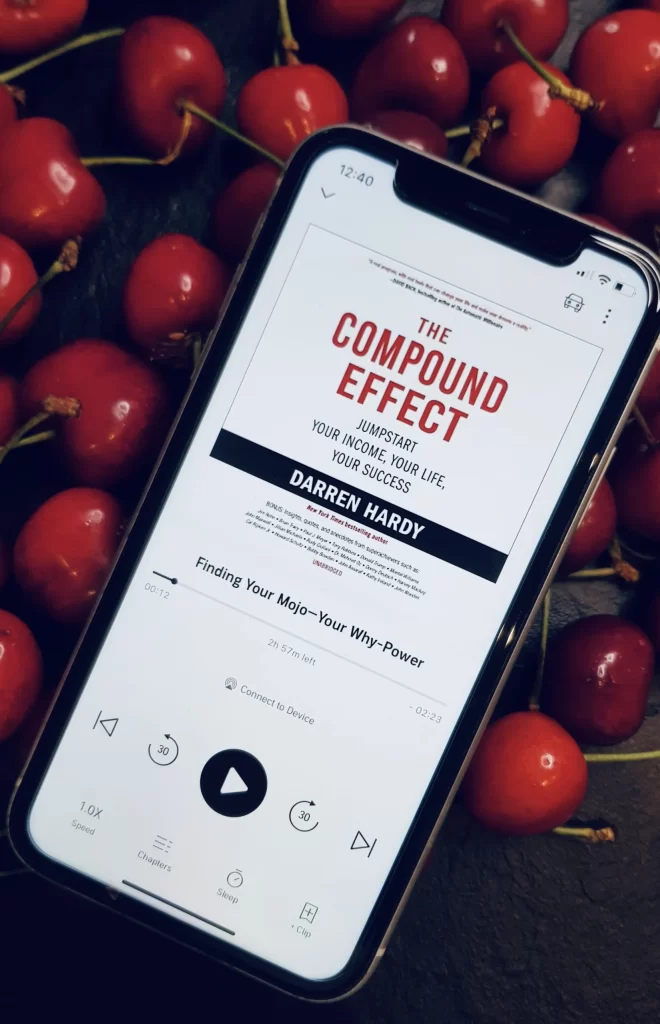 The Molecule of More
The Molecule of More
How a Single Chemical in Your Brain Drives Love, Sex, and Creativity – and Will Determine the Fate of the Human Race
Daniel Z. Lieberman & Michael E. Long
BenBella Books (14 Aug. 2018)
About the authors
Daniel Z. Lieberman, M.D. is professor and vice chair for clinical affairs in the Department of Psychiatry and Behavioral Sciences at George Washington University. Dr. Lieberman is a Distinguished Fellow of the American Psychiatric Association, a recipient of the Caron Foundation Research Award, and he has published over 50 scientific reports on behavioral science. He received his medical degree and completed his psychiatric training at New York University.
Trained as a physicist, Michael E. Long is an award-winning speechwriter, screenwriter, and playwright. A popular speaker and educator, Mr. Long has addressed audiences around the world, including in a keynote at Oxford University. He teaches writing at Georgetown University, where he is a former director of writing. Mr. Long pursued undergraduate studies at Murray State University and graduate studies at Vanderbilt University.
About the book
“In your brain the down world is managed by a handful of chemicals—neurotransmitters, they’re called—that let you experience satisfaction and enjoy whatever you have in the here and now. But when you turn your attention to the world of up, your brain relies on a different chemical—a single molecule—that not only allows you to move beyond the realm of what’s at your fingertips, but also motivates you to pursue, to control, and to possess the world beyond your immediate grasp. It drives you to seek out those things far away, both physical things and things you cannot see, such as knowledge, love, and power. Whether it’s reaching across the table for the salt shaker, flying to the moon in a spaceship, or worshipping a god beyond space and time, this chemical gives us command over every distance, whether geographical or intellectual.
Those down chemicals—call them the Here & Nows—allow you to experience what’s in front of you. They enable you to savor and enjoy, or perhaps to fight or run away, right now. The up chemical is different. It makes you desire what you don’t yet have, and drives you to seek new things. It rewards you when you obey it, and makes you suffer when you don’t. It is the source of creativity and, further along the spectrum, madness; it is the key to addiction and the path to recovery; it is the bit of biology that makes an ambitious executive sacrifice everything in pursuit of success, that makes successful actors and entrepreneurs and artists keep working long after they have all the money and fame they ever dreamed of; and that makes a satisfied husband or wife risk everything for the thrill of someone else. It is the source of the undeniable itch that drives scientists to find explanations and philosophers to find order, reason, and meaning.
It is why we look into the sky for redemption and God; it is why heaven is above and earth is below. It is fuel for the motor of our dreams; it is the source of our despair when we fail. It is why we seek and succeed; it is why we discover and prosper.
It is also why we are never happy for very long.
To your brain, this single molecule is the ultimate multipurpose device, urging us, through thousands of neurochemical processes, to move beyond the pleasure of just being, into exploring the universe of possibilities that come when we imagine. Mammals, reptiles, birds, and fish all have this chemical inside their brains, but no creature has more of it than a human being. It is a blessing and a curse, a motivation and a reward. Carbon, hydrogen, oxygen, plus a single nitrogen atom—it is simple in form and complex in result. This is dopamine, and it narrates no less than the story of human behavior.”
Dopamine is probably one of the most hyped brain chemicals. I grabbed this book because I wanted to learn more about it – how it works and affects our behaviour. And, of course, most importantly, how can we use this knowledge to live better lives?
The Molecule of More dives into dopamine’s role in human behaviour and explains a complex science in a pretty simple way. Here Daniel Lieberman and Michael Long use the latest insights from psychology, neuroscience, and social studies to demonstrate how one brain chemical kindles our desires, fuels our creativity, and makes us fall in love. Very informative, provocative and engaging reading.
The book is packed with great ideas, and in these notes, we’ll cover just a few of our favourite ones.
Let’s jump straight in.
Key insights:
Dopamine vs H&Ns
“Dopamine isn’t the pleasure molecule, after all. It’s the anticipation molecule. To enjoy the things we have, as opposed to the things that are only possible, our brains must transition from future-oriented dopamine to present-oriented chemicals, a collection of neurotransmitters we call the Here and Now molecules, or the H&Ns. Most people have heard of the H&Ns. They include serotonin, oxytocin, endorphins (your brain’s version of morphine), and a class of chemicals called endocannabinoids (your brain’s version of marijuana). As opposed to the pleasure of anticipation via dopamine, these chemicals give us pleasure from sensation and emotion. In fact, one of the endocannabinoid molecules is called anandamide, named after a Sanskrit word that means joy, bliss, and delight.”
For quite a long time, dopamine has been considered to be a pleasure molecule – the feel-good brain chemical. And it makes sense as people feel pleasure when dopamine is active. However, years of research showed that dopamine is more about anticipation than pleasure.
It gets released when we encounter new, unexpected and exciting things. It drives our motivation, helps us achieve goals and create new things.
But dopamine comes with a trick. Once you’ve got something you wanted and it becomes very familiar to you – a new house, a pay rise, or a new girlfriend – your dopamine level drops. So does your motivation and feeling of pleasure.
Now. To enjoy the things you have, your brain needs to release a very different set of neurotransmitters – so-called Here and Now molecules (H&Ns). These are the chemicals that help you experience feelings of joy and delight in the present moment. Those brain circuits that produce H&Ns tend to compete with – and even suppress – dopamine production.
This concept helps us understand why it is easy to fall in love (dopamine boost) and harder to stay in love (H&Ns!). And it also explains why we experience hedonic adaptation.
P.S.: If you need some practical tips on how to stay in love, I highly recommend checking out our notes on Happy Together by Suzann Pileggi Pawelski and James Pawelski, where they apply the principles of positive psychology to a romantic relationship.
Dopamine control circuit
“It’s natural to confuse wanting and liking. It seems obvious that we would want the things that we will like having. That’s how it would work if we were rational creatures, and despite all evidence to the contrary, we persist in thinking that we are rational creatures. But we’re not. Frequently we want things that we don’t like. Our desires can lead us toward things that may destroy our lives, such as drugs, gambling, and other out-of-control behaviors.
The dopamine desire circuit is powerful. It focuses attention, motivates, and thrills. It has a profound influence over the choices we make. Yet it isn’t all-powerful. Addicts get clean. Dieters lose weight. Sometimes we switch off the TV, get off the couch, and go for a run. What kind of circuit in the brain is powerful enough to oppose dopamine? Dopamine is. Dopamine opposing dopamine. The circuit that opposes the desire circuit might be called the dopamine control circuit.”
We have two dopamine circuits in our brains. One of them – the dopamine desire circuit – makes us want things, and another one – the dopamine control circuit – controls our desires and keeps them in check. At the same time, the key role of the dopamine control circuit is to help us get the things we want.
The problem with the desire circuit is that it can mess up our rationality and make us want things we don’t like. That’s how addictions – whether to substances or behavioural ones – are formed.
So to manage the desires that we don’t like (e.g. gobbling the entire chocolate bar in the evening, spending the whole evening scrolling social media, buying an expensive bag with a credit card), we need our dopamine control circuit to kick in. That’s why self-regulation and self-control are super important executive skills. We need it to resist temptations and delay gratification to succeed.
P.S.: if you want to dig deeper into how big companies hack and exploit our dopamine desire circuit, check out Adam Alter’s fantastic book Irresistible.
Dopamine and success
“Success takes years of hard work and so many revisions to the original idea that it’s barely recognizable by the time it gets to market. It’s not enough to just imagine the future. To bring an idea to fruition we must struggle with the uncompromising realities of the physical world. We need not only knowledge but also tenacity. Dopamine, the chemical of future success, is there to deliver.”
Yep. To succeed, you need grit. And grit depends on dopamine.
Remember Angela Duckworth’s formula for grit: Interest + Practice + Purpose + Hope? Dopamine is the main driver for all four components. Lieberman and Long add:
“The ability to put forth effort is dopaminergic. The quality of that effort can be influenced by any number of other factors, but without dopamine, there is no effort at all.”
And yes, growth mindset depends on dopamine as well. When you focus on progress, you see the immediate mini-success. Step by step. This success activates the dopamine reward system. And it directly affects your perseverance.
No magic. Just brain chemistry.
The source of creativity
“Oshin Vartanian, a researcher at York University in Toronto, wanted to figure out what part of the brain was most active when people discovered novel solutions to problems, so he scanned people’s brains while they were solving a problem that required creativity. He found that when they discovered the solution to the problem, the front of their brains on the right side was activated. He wondered if this part of the brain was also involved in model breaking.
In a second experiment he asked participants not to solve a problem but simply to use their imagination. First he asked them to imagine real things, such as “a flower that is a rose.” Then he asked them to imagine things that don’t exist, things that don’t fit the conventional model of reality, such as “a living thing that is a helicopter.” With the volunteers in the scanner, he found that the same part of the brain lit up as before, but only when participants thought about objects that did not exist in life. When they imagined reality itself, the region stayed dark.
Brain scans of people with schizophrenia show changes in that same area, the right ventrolateral prefrontal cortex. Maybe it’s because when we are being creative, we behave a little bit like a person with schizophrenia. We stop inhibiting aspects of reality that we had previously written off as unimportant, and we attach salience to things we once thought were irrelevant.”
How crazy is that? Creative brains are very much like the brains of people with schizophrenia. That’s why many creative people – artists, scientists, writers – often seem a bit coo-coo. Again, blame the high level of dopamine for that!
Our brain uses dopamine to plan, imagine, and strategize. It helps us think in new and unconventional ways and create connections between seemingly disparate things. Its main purpose is to help us craft a future that is better than our present:
“Dopamine gives us the power to create. It allows us to imagine the unreal and connect the seemingly unrelated. It allows us to build mental models of the world that transcend mere physical description, moving beyond sensory impressions to uncover the deeper meaning of what we experience. Then, like a child knocking over a tower of blocks, dopamine demolishes its own models so that we can start fresh and find new meaning in what was once familiar.”
What is also interesting, our brain unleashes dopamine when we sleep. That is one of the reasons why our dreams often seem bizarre, with many unrelated things connected strangely. At the same time, there is scientific evidence that you can tap into your creativity while you sleep to help you find a solution to a particular problem. Scientists called it dream incubation (check it out – it really works!).
Loss aversion and dopamine
“When scientists performed brain scans during wagering experiments, they naturally looked at dopamine first. They found that neural activity in the desire circuit increased after wins and decreased after losses—as would be expected. But the changes weren’t symmetrical. The magnitude of the decrease after losses was larger than the increase after gains. The dopamine circuit was mirroring the subjective experience. The effect of loss was greater than the effect of gain.
What neural pathways were behind this imbalance? What was amplifying the loss reaction? The researchers turned their attention to the amygdala—an H&N structure that processes fear and other negative emotions. Every time a participant lost a bet, their amygdala fired up, intensifying feelings of distress. It was H&N emotion that was driving loss aversion. The H&N system doesn’t care about the future. It doesn’t care about things we might get. It cares about what we have right now. And when those things are threatened, out comes the experience of fear and distress.”
That explains Kahneman’s Prospect Theory from the neuroscience point of view. Our System 1 – aka autopilot – highly depends on neurotransmitters in our brain. And they often lead us into cognitive traps. Fascinating.
Finding Balance – how to get off the dopamine treadmill
Even though dopamine makes up a tiny portion of our brain chemicals, it profoundly impacts our life. Dopamine drives us forward, but at the same time, too much dopamine may stand in the way of our well-being.
Authors suggest that if we want to live a happy life, we need to find a balance between dopamine rushes and the serenity of H&Ns. Here are a few practical suggestions on how to do this:
- Develop Mastery – “Mastery is the point at which dopamine bows to H&N. Having done all it can do, dopamine pauses, and allows H&N to have its way with our happiness circuits. Even if it’s only for a short time, dopamine doesn’t fight the feeling of contentment. It approves. The best basking is basking in a job well done. Mastery also creates a feeling of what psychologists call an internal locus of control.” To develop mastery, you need deliberate practice, growth mindset, and optimism.
- Spend more time in nature – it’s a complex environment that resets our brain, boosts performance and helps to balance dopamine with H&Ns.
- Multitask less – it’s not productive and stressful for our brain (and this type of stress leads to fatigue and burnout).
- Spend more time in the present – practice mindfulness and enjoy the little things in your life.
- Work with your hands – create stuff! “Each project is a problem that needs to be solved—a dopaminergic activity—and then the solution is made real. Sometimes solving repair problems requires creativity because the necessary tools or supplies aren’t available. For example, figuring out that a nail clipper can be used as a wire cutter. Fixing things also boosts self-efficacy and increases one’s sense of control: H&N delivering dopaminergic gratification.”
This also reminds me of 12 happiness activities from Sonja Lyubomirsky’s great book The How of Happiness, and to me, they are all about balancing dopamine with H&Ns!
Action steps for you:
1) Work on strengthening your dopamine control circuit – practice self-regulation and self-control, and work on your willpower.
2) Try a dream incubation exercise if you need to find a creative solution to a problem you are currently thinking about.
3) Schedule activities to boost your H&N chemicals – a daily walk in a park, meditation, creative project with kids, or pick an activity and develop mastery in it (sports, cooking, gardening, etc.).
Quotes from the book:









